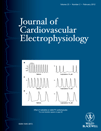QRS Characteristics Fail to Reliably Identify Ventricular Tachycardias That Require Epicardial Ablation in Ischemic Heart Disease
Dr. Tedrow reports participation on research grants supported by St. Jude Medical and Biosense Webster. Other authors: No disclosures.
Abstract
Criteria for Epicardial Origin in Ischemic VT. Objectives: We tested proposed algorithms for idiopathic and nonischemic tachycardias for their ability to identify epicardial LV-VT origins.
Backgroud: Several ECG features have been reported to identify epicardial origins for left ventricular tachycardias (LV-VTs) in the absence of myocardial infarction. Only limited data exist in postinfarction patients.
Methods: The QRS features of 24 VTs that were ablated from the epicardium and 39 left ventricular VTs ablated from the endocardium were retrospectively analyzed for various 12-lead ECG features previously reported.
Results: No ECG feature consistently predicted an epicardial LV-VT origin in infarct-related tachycardias, with epicardial VTs showing slightly longer QRS durations (189 ± 32 ms in epicardial vs 179 ± 37 ms in endocardial, P = 0.28). Pseudo-delta duration was 38 ± 27 versus 47 ± 27 ms (P = 0.2), intrinsicoid deflection time 93 ± 35 versus 86 ± 32 ms (P = 0.4), shortest RS 97 ± 38 versus 99 ± 32 ms (P = 0.77), and median deflection index 0.82 ± 0.25 versus 0.87 ± 0.22 (P = 0.43).
The finding of a Q wave in lead I and the absence of a Q wave in the inferior leads failed to predict an epicardial origin in superior LV-VT sites. Q waves in any inferior lead and aVR/aVL-ratio<1 were not specific for an epicardial origin in inferior sites (all P = ns). Furthermore, all inferior LV-VTs showed a Q wave in the inferior leads which correlated with pre-existing Q-waves in sinus rhythm (P = 0.045).
Conclusion : Proposed 12-lead ECG features for differentiation of epicardial versus endocardial sites for nonischemic LV-VTs do not reliably identify VTs that require ablation from the epicardium. Endocardial mapping should be the first approach to catheter ablation for VTs in patients with ischemic heart disease. (J Cardiovasc Electrophysiol, Vol. 23, pp. 188-193, February 2012)




